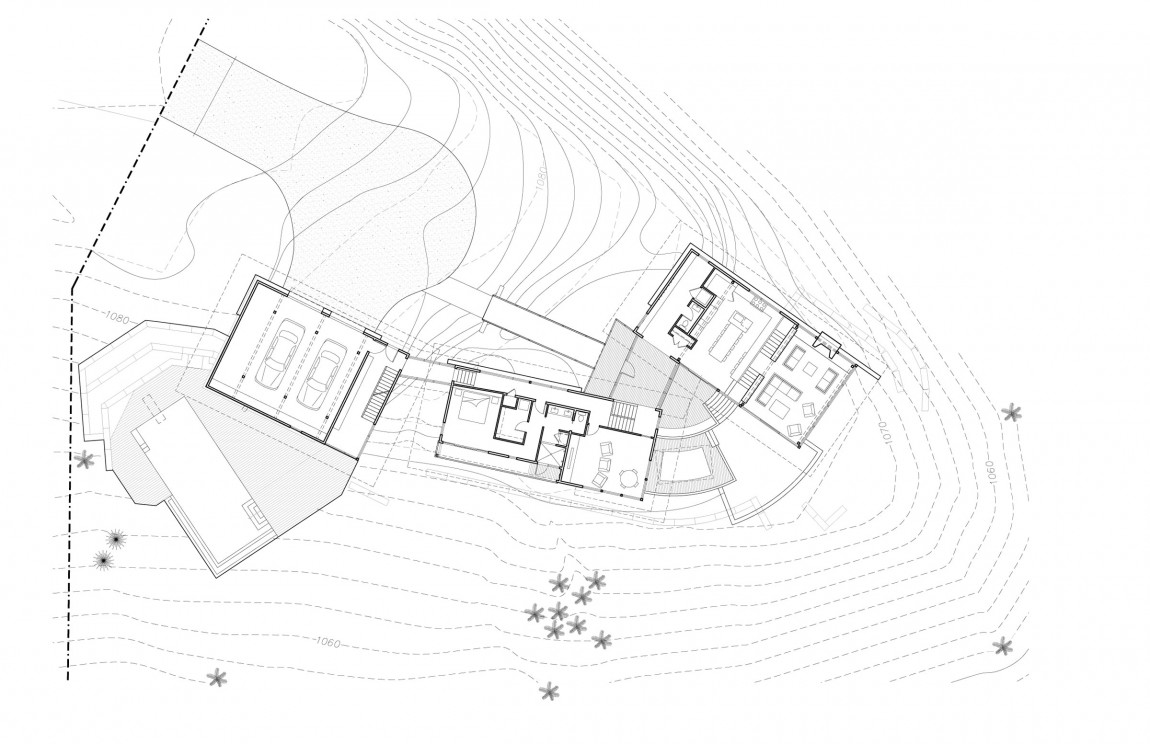Aptly named, Basecamp is a private residence that was designed by Johnston Architects for a family of seven. It is located in Roland, Washington, USA, and it acts as a base in which its owners can relax, gather their strength and prepare for their next adventure. The retreat is large enough to accommodate over 18 people, and it offers great opportunities for relaxation, socialization and fun. The residence is similar to a camp with separate cabins, each cabin boasting its own distinct purpose.

The sleeping, living and playing areas each flaunt their own individual characters. However, the boundaries between the indoor and outdoor spaces are blurred, just like the distinction between work and play is blurred. The dining area is sometimes used for conferences, while the kitchen island can be converted into a dining table. As far as sustainability is concerned, Basecamp features solar hot water collectors as well a high-end home automation system that can be controlled using iOS-based devices.
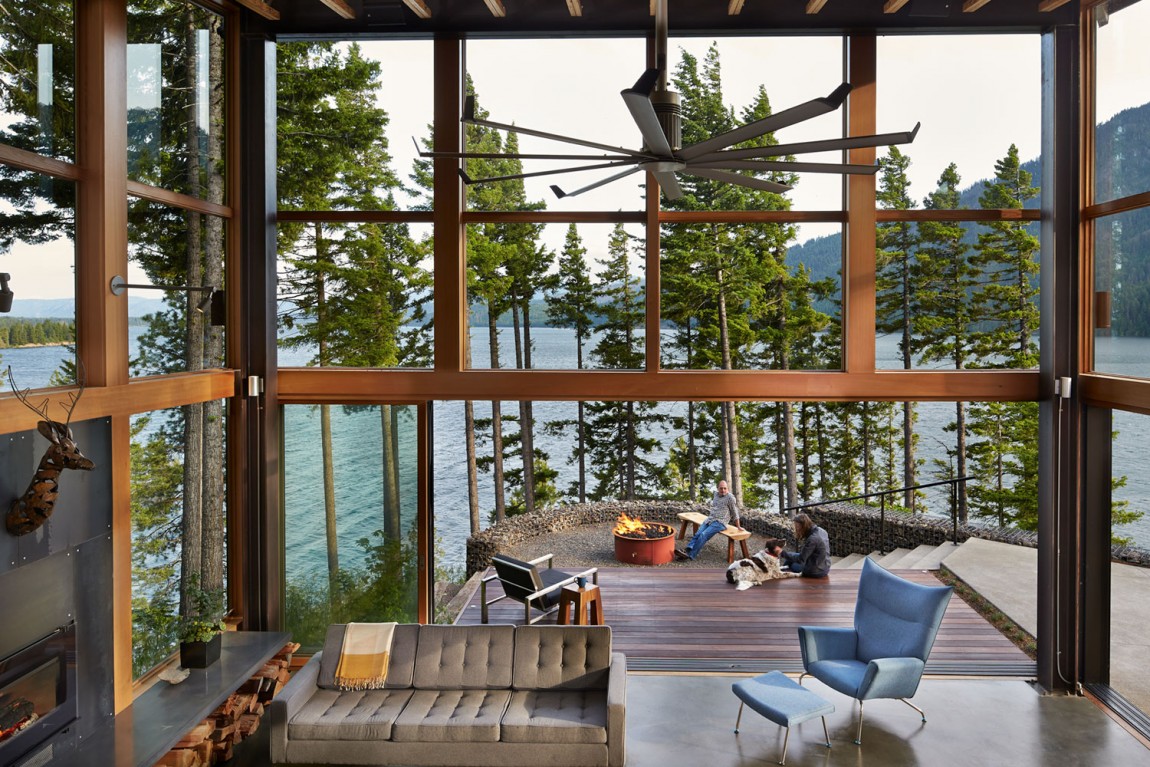
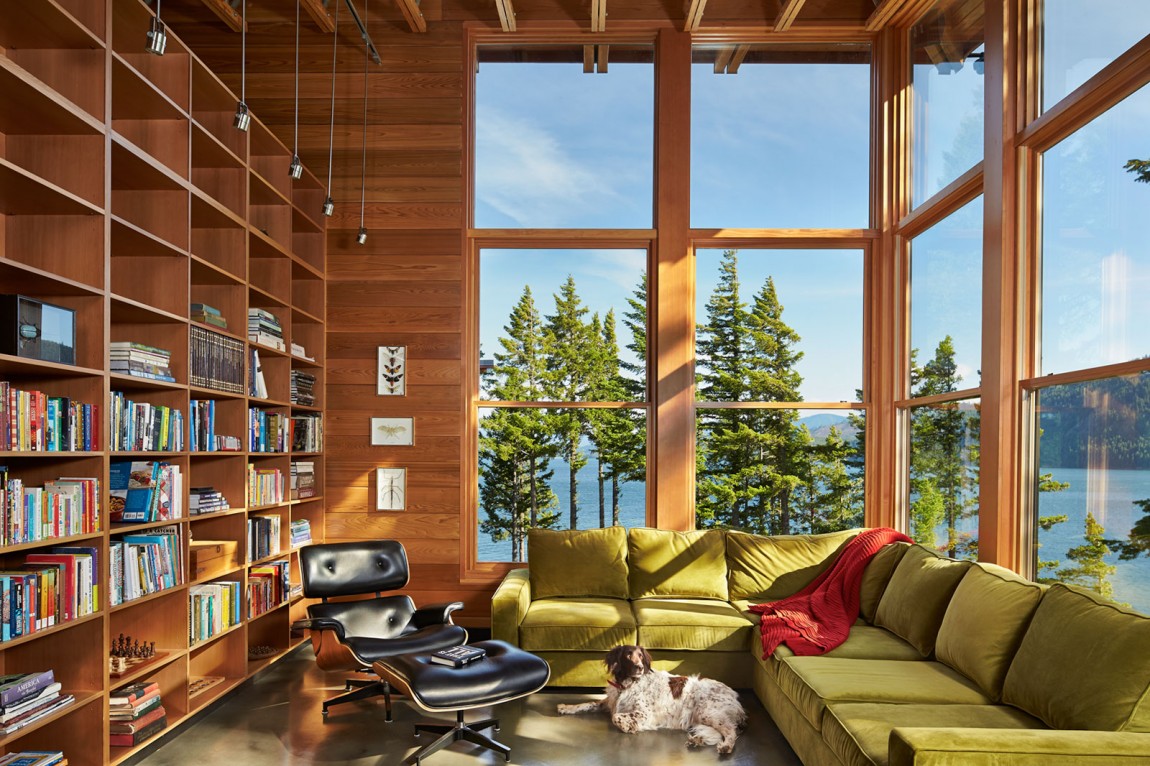
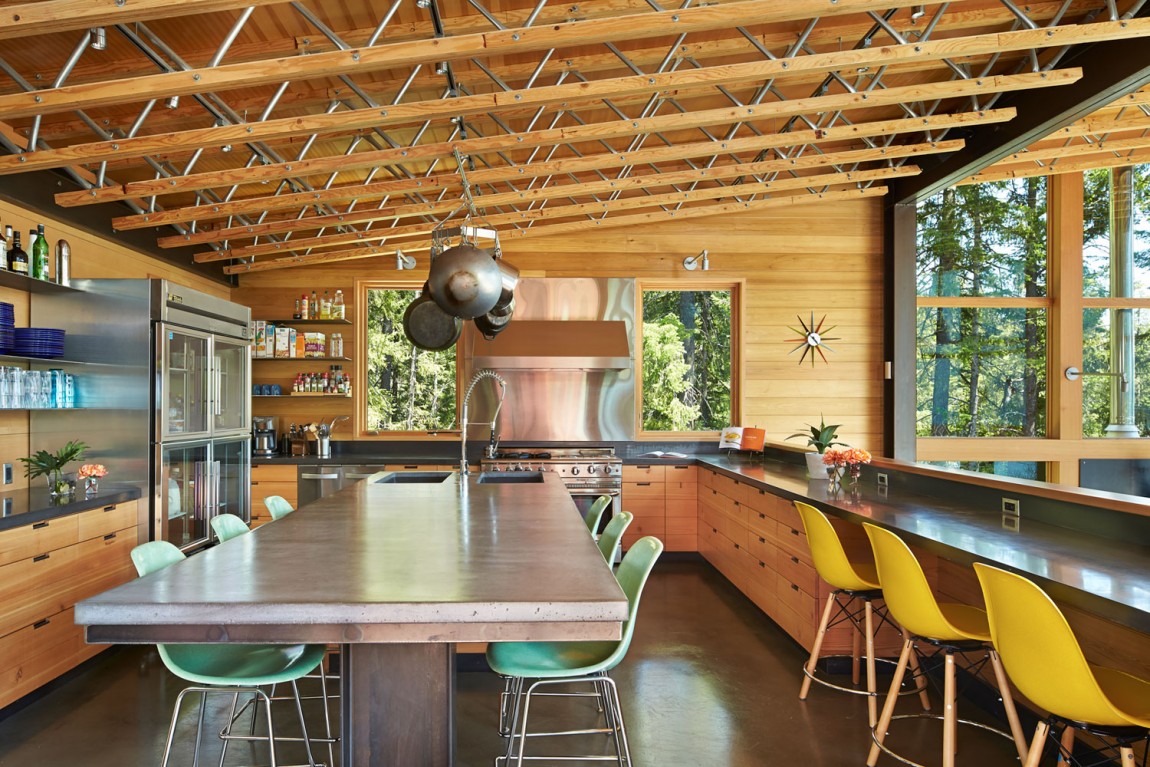
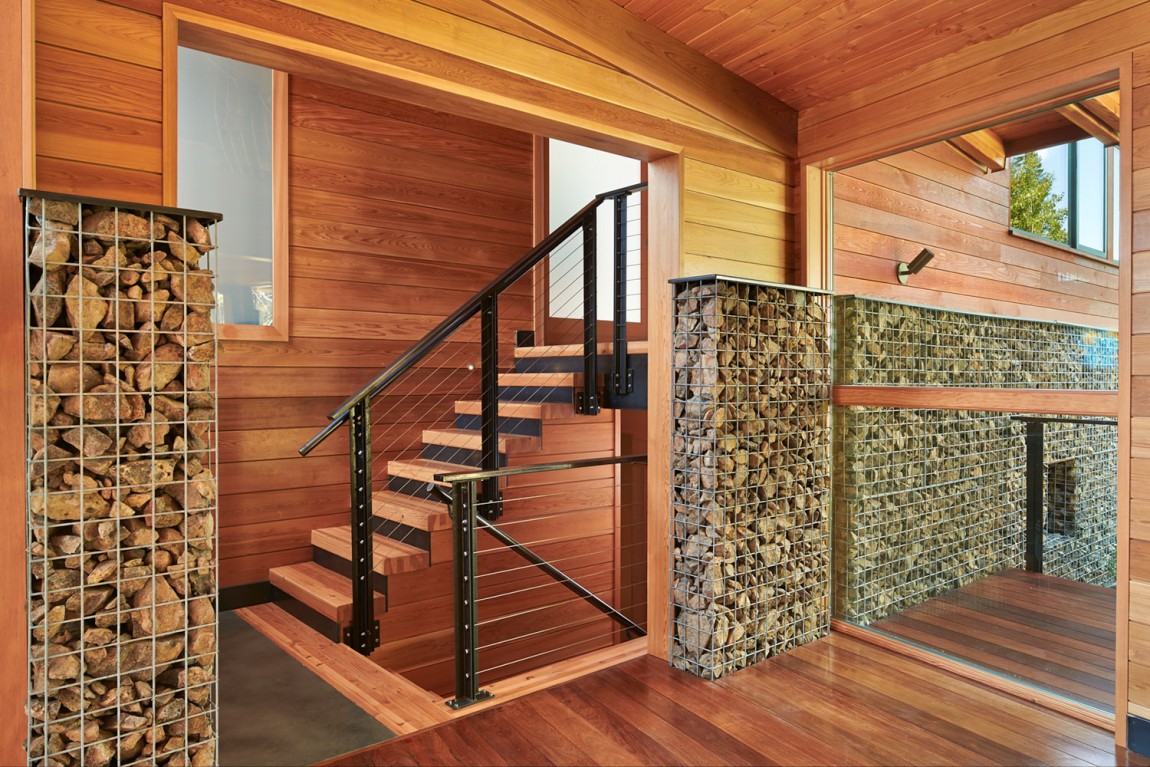
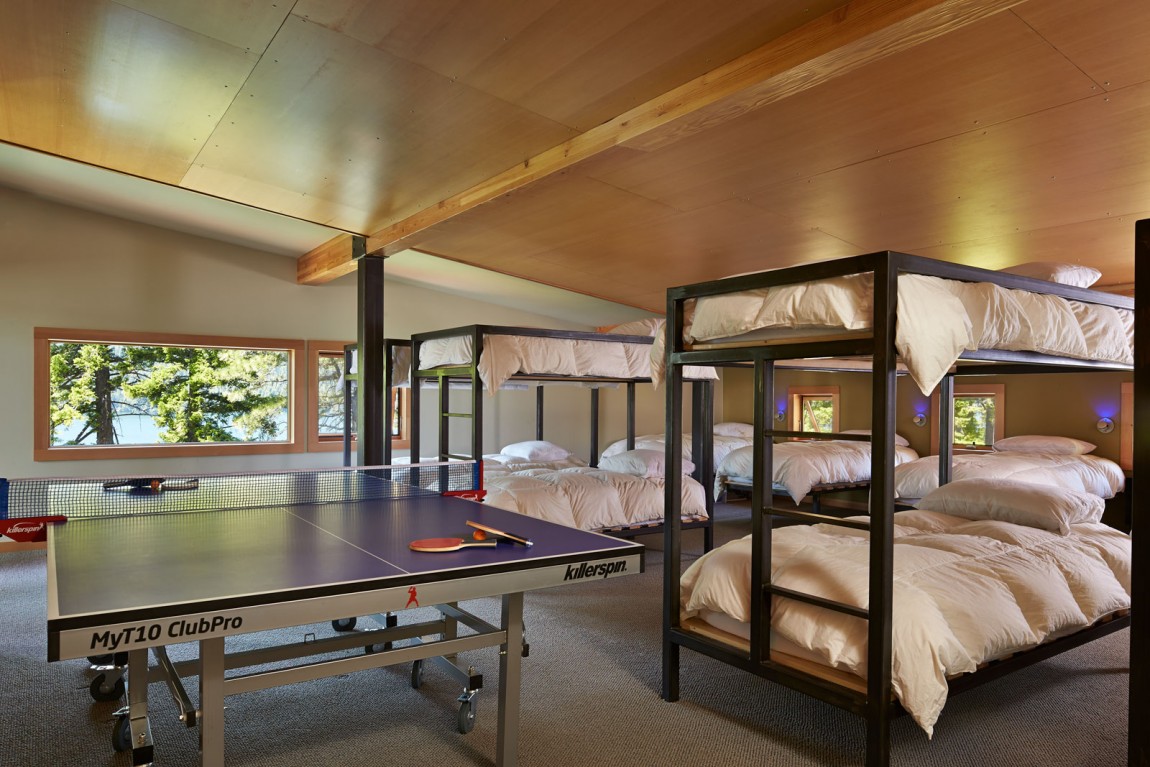
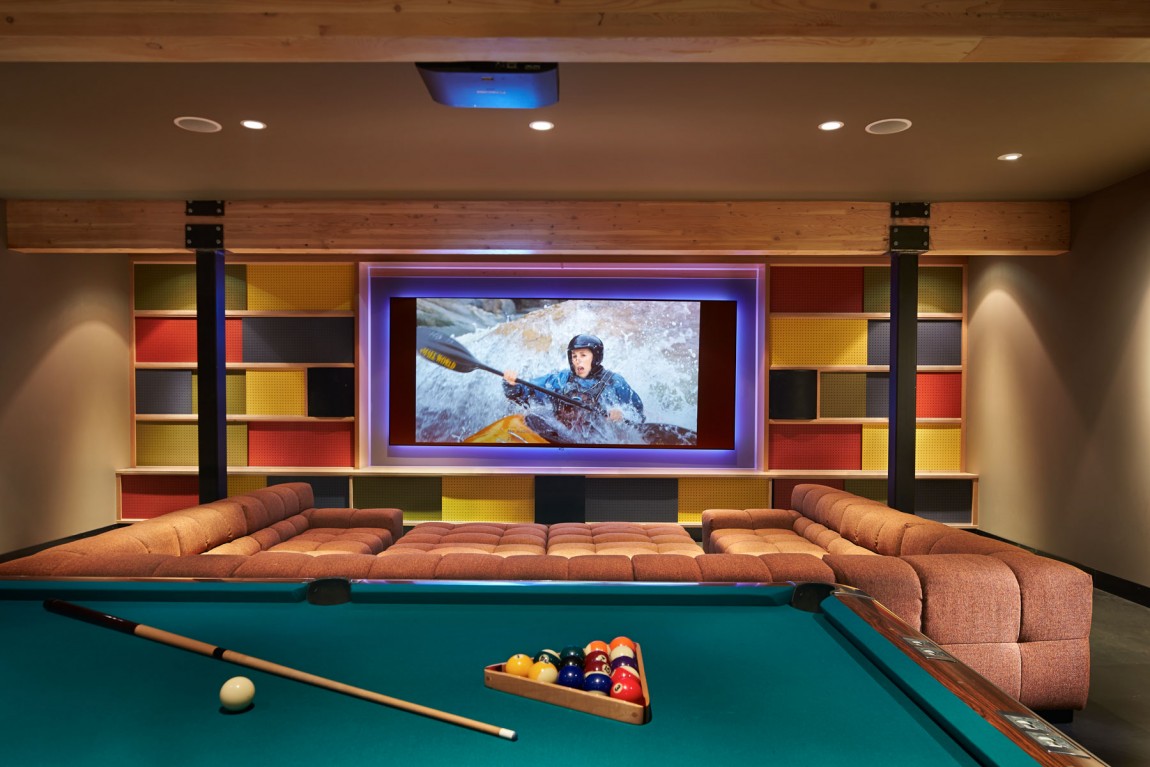
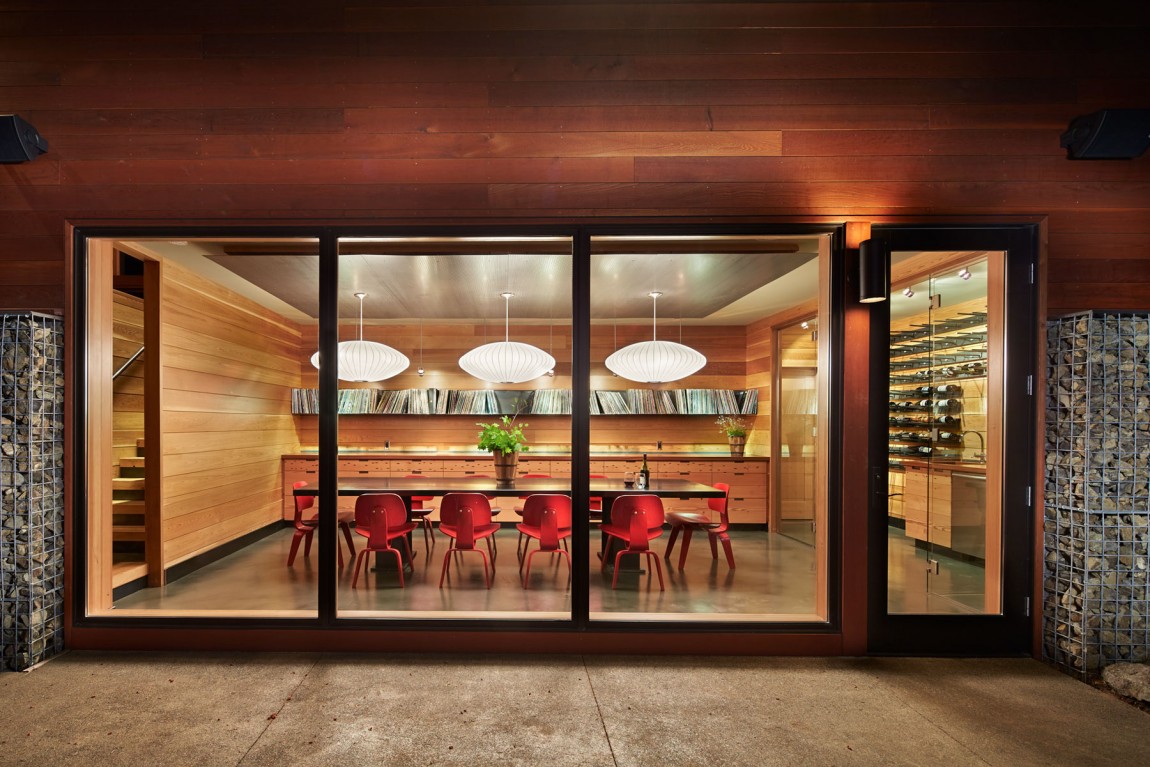
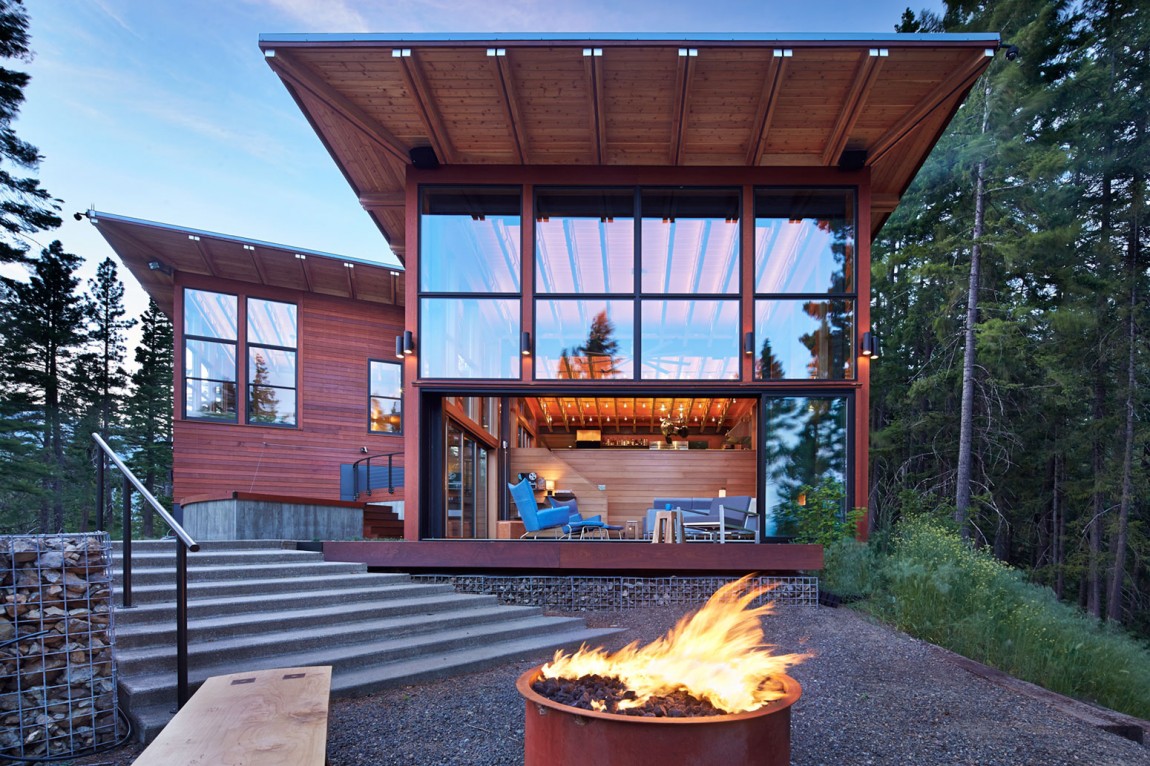
From the architect:
Basecamp exudes the playfulness and optimism of a young family. There is a palpable sense of adventure. The concept that guided the project refers to pausing at a base camp before ascending a mountain. This retreat was conceived as a place to recharge between milestones in life. The spatial organization allows one to reorient and reconnect with nature between activities. Basecamp provides distinct zones while blurring boundaries.
The project accommodates the active lifestyle of a family of seven. The interior palette consists of durable natural materials and exposed structure. The retreat sleeps 18+ people to include friends, extended family, and colleagues. It provides a setting where the couple can balance work and play by hosting clients from around the world for their global consulting firm. People who would normally meet in corporate board rooms can build consensus in an inspiring setting.
The starting point for the concept was to create a camp with separate cabins for each purpose including live, sleep, and play. In the process of programming and site planning it became apparent that it would be more effective to consolidate the cabins into three distinct yet connected zones. Autonomy and acoustic control is maintained. The circulation spaces are an opportunity to reorient to the Cle Elum Lake context while transitioning between activities. Within the living block, spaces are arranged along a view axis and step down from the kitchen to hearth to outdoor fire and the water beyond. This enables a visual journey between spaces and creates a comfortable, compelling sense of prospect and refuge.
Although the functions are separated into three distinct blocks there is a blurring of boundaries between indoor/outdoor spaces through the use of gabion walls on the interior and window walls. The distinction between work and play is blurred. The kitchen island is reinvented as dining table and the dining room is often repurposed as conference room. Sustainable strategies include low tech elements such as solar hot water collectors contrasted with high tech home automation systems that allow the owner to control temperature and lighting with iOS devices.
Basecamp achieves efficiency through a consolidation of work and play and an appropriate use of technology. It celebrates the journey of a family with five energetic boys and provides the backdrop for pause or milestones. It is a place to recharge before setting out for the summit and upon return.
